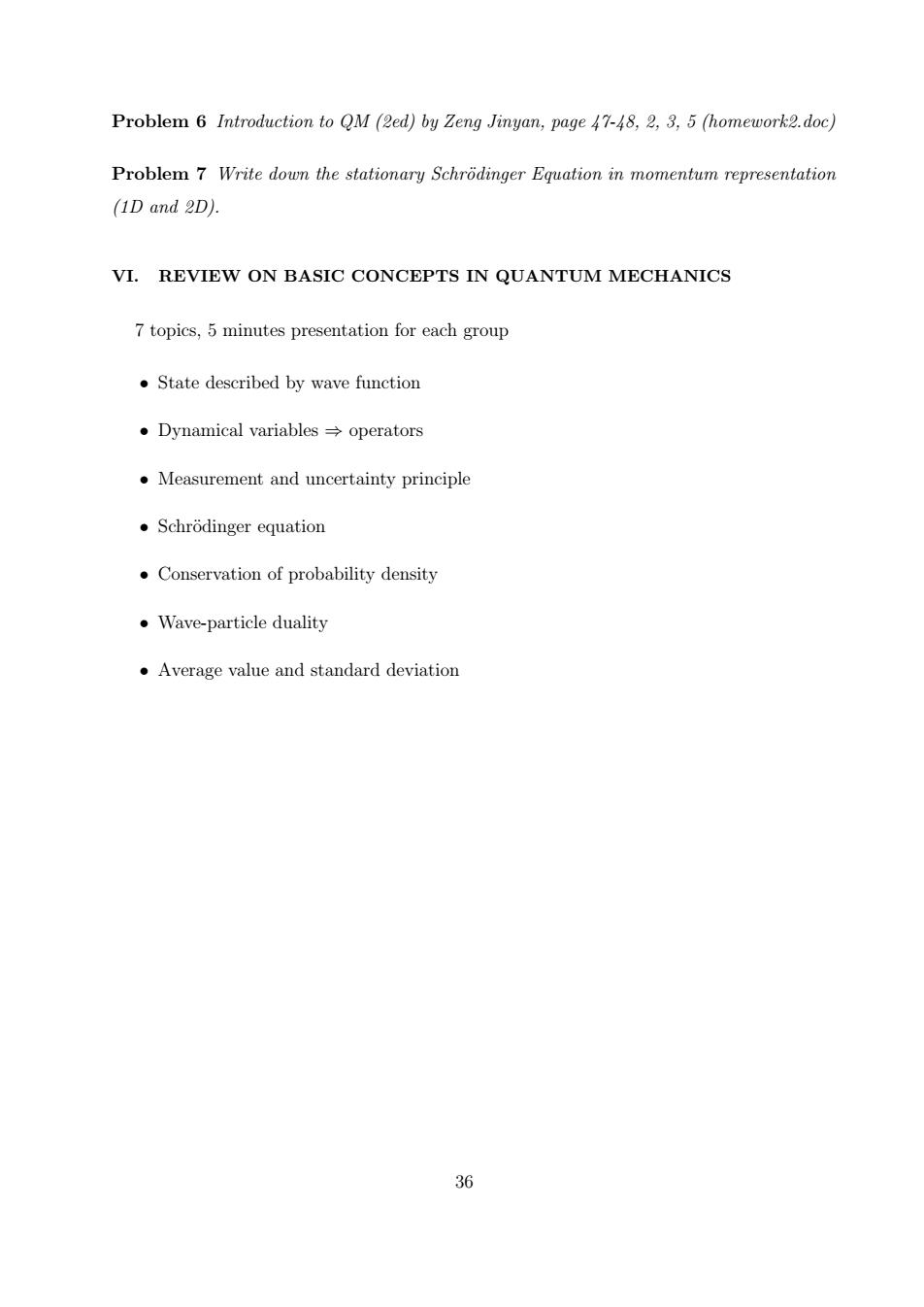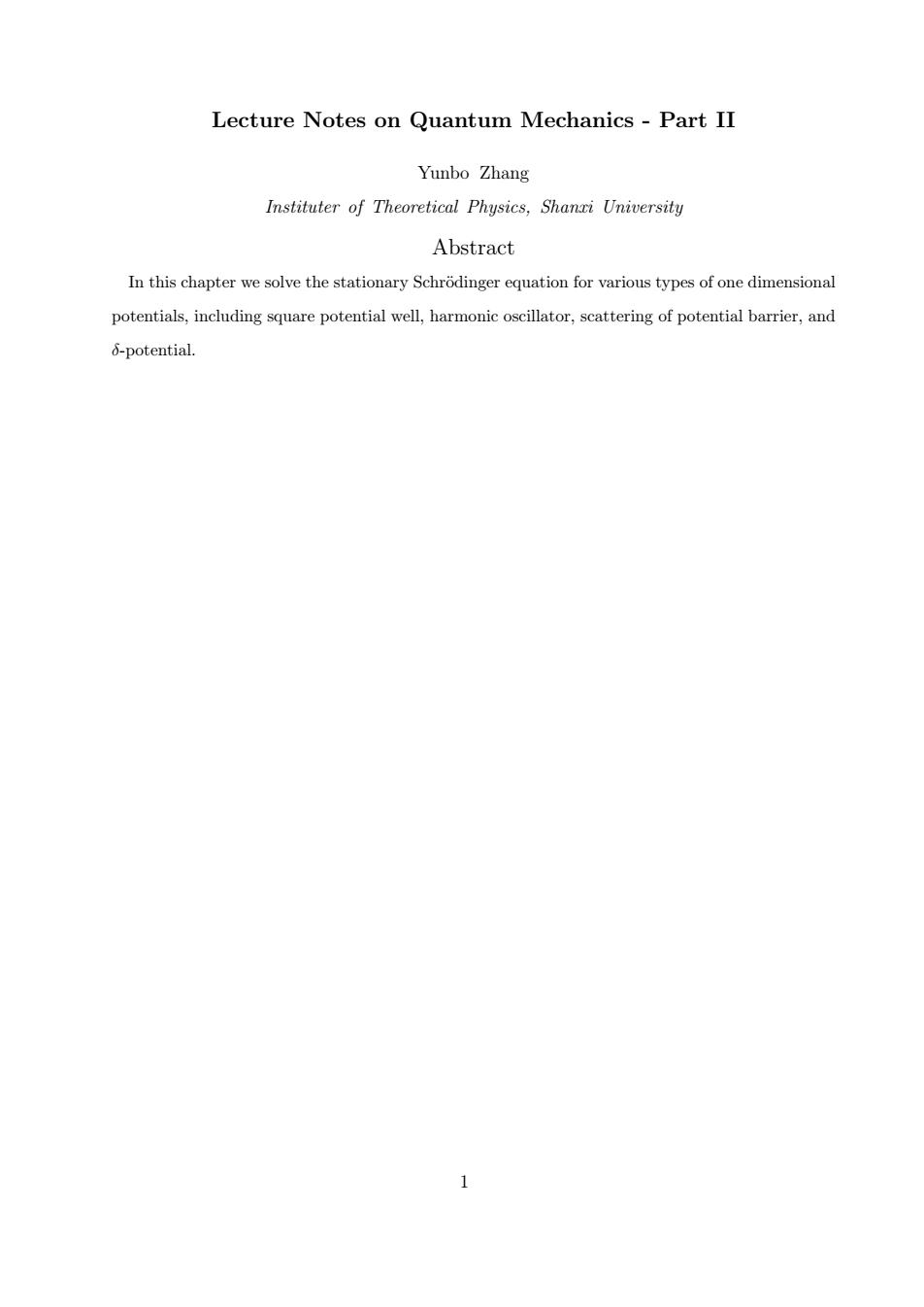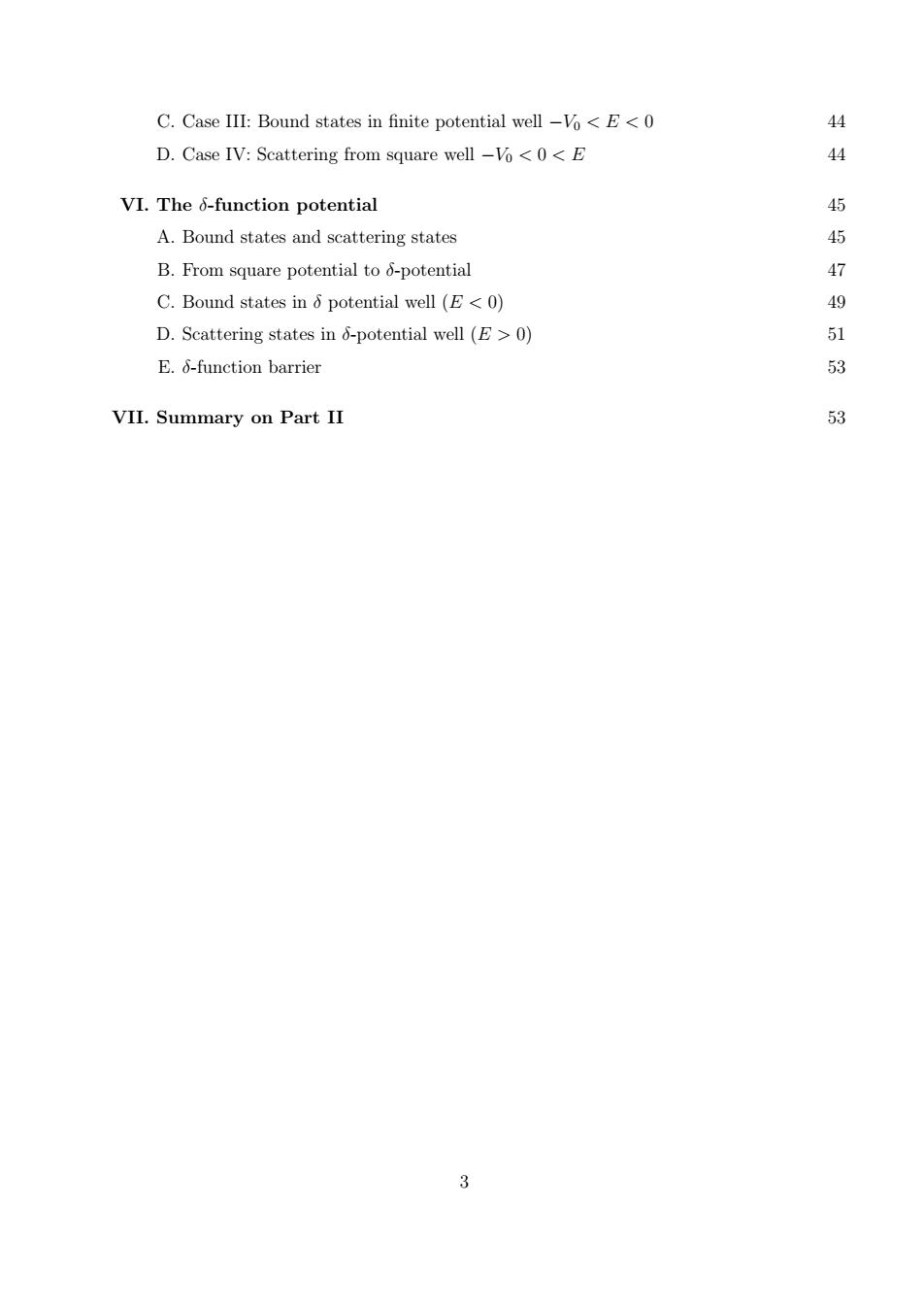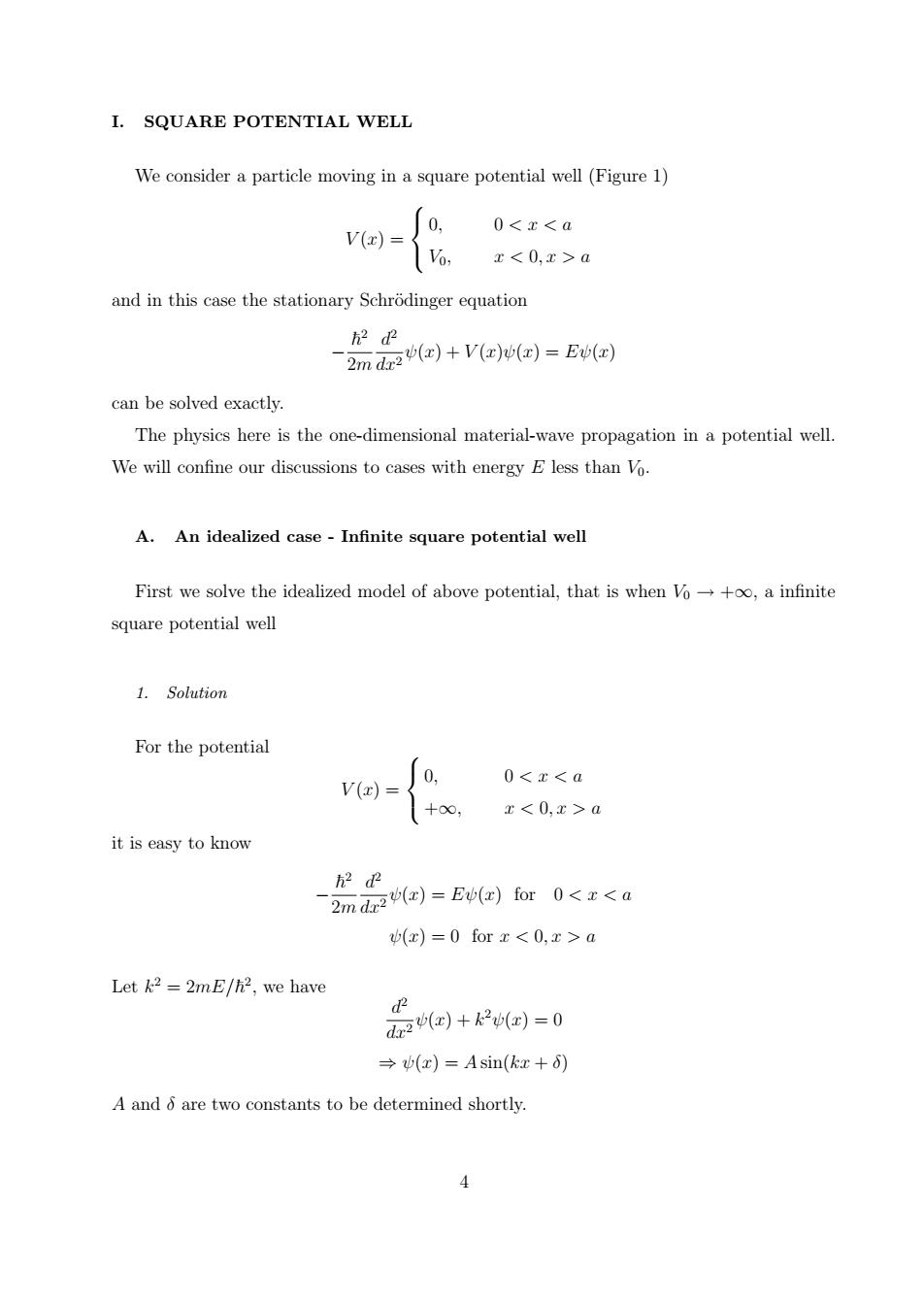
Problem 6 Introduction to QM(2ed)by Zeng Jinyan,page 47-48,2,3,5(homework2.doc) Problem 7 Write down the stationary Schrodinger Equation in momentum representation (1D and 2D). VI.REVIEW ON BASIC CONCEPTS IN QUANTUM MECHANICS 7 topics,5 minutes presentation for each group .State described by wave function ·Dynamical variables→operators Measurement and uncertainty principle .Schrodinger equation .Conservation of probability density Wave-particle duality .Average value and standard deviation 36
Problem 6 Introduction to QM (2ed) by Zeng Jinyan, page 47-48, 2, 3, 5 (homework2.doc) Problem 7 Write down the stationary Schr¨odinger Equation in momentum representation (1D and 2D). VI. REVIEW ON BASIC CONCEPTS IN QUANTUM MECHANICS 7 topics, 5 minutes presentation for each group • State described by wave function • Dynamical variables ⇒ operators • Measurement and uncertainty principle • Schr¨odinger equation • Conservation of probability density • Wave-particle duality • Average value and standard deviation 36

Lecture Notes on Quantum Mechanics-Part II Yunbo Zhang Instituter of Theoretical Physics,Shanzi University Abstract In this chapter we solve the stationary Schrodinger equation for various types of one dimensional potentials,including qre potential well,harmonic,scattering of potential barrier,and 6-potential. 1
Lecture Notes on Quantum Mechanics - Part II Yunbo Zhang Instituter of Theoretical Physics, Shanxi University Abstract In this chapter we solve the stationary Schr¨odinger equation for various types of one dimensional potentials, including square potential well, harmonic oscillator, scattering of potential barrier, and δ-potential. 1

Contents I.Square Potential Well A.An idealized case-Infinite square potential well 4 1.Solution 2.Energy quantization 3.Wave function normalization 6 4.Shift of origin of coordinate B.Square potential well of finite depth 1.Solution 2.Even parity case 9 3.Odd parity case 10 4.Graphical solution of the energy defining equation II.Generic Problem of Quantum Mechanics 12 A.Properties of wave functions 14 B.Construction of the most general solution 15 C.An example 15 III.The Harmonic Oscillator A.Algebraic method:ladder operator 1.Commutator 2.Ladder operators 20 3.Normalization algebraically:find A 23 B.Analytic method:differential equation 25 1.Discussion on the energy quantization 28 2.Discussion on the wave function 29 IV.The Free Particle:Revisited 33 V.Penetration of Potential Barrier 39 A.Case I:Barrier penetration E<Vo 39 1.Boundary conditions 41 B.Case II:Barrier penetration EV
Contents I. Square Potential Well 4 A. An idealized case - Infinite square potential well 4 1. Solution 4 2. Energy quantization 5 3. Wave function normalization 6 4. Shift of origin of coordinate 7 B. Square potential well of finite depth 8 1. Solution 8 2. Even parity case 9 3. Odd parity case 10 4. Graphical solution of the energy defining equation 10 II. Generic Problem of Quantum Mechanics 12 A. Properties of wave functions 14 B. Construction of the most general solution 15 C. An example 15 III. The Harmonic Oscillator 17 A. Algebraic method: ladder operator 18 1. Commutator 18 2. Ladder operators 20 3. Normalization algebraically: find An 23 B. Analytic method: differential equation 25 1. Discussion on the energy quantization 28 2. Discussion on the wave function 29 IV. The Free Particle: Revisited 33 V. Penetration of Potential Barrier 39 A. Case I: Barrier penetration E < V0 39 1. Boundary conditions 41 B. Case II: Barrier penetration E > V0 43 2

C.Case III:Bound states in finite potential well-Vo<E<0 D.Case IV:Scattering from square well -Vo<0<E 4 VI.The 6-function potential 45 A.Bound states and scattering states 45 B.From square potential to 6-potential 47 C.Bound states in 6 potential well(E<0) 西 D.Scattering states in 6-potential well (E>0) 51 E.8-function barrier 53 VII.Summary on Part II 3
C. Case III: Bound states in finite potential well −V0 < E < 0 44 D. Case IV: Scattering from square well −V0 < 0 < E 44 VI. The δ-function potential 45 A. Bound states and scattering states 45 B. From square potential to δ-potential 47 C. Bound states in δ potential well (E < 0) 49 D. Scattering states in δ-potential well (E > 0) 51 E. δ-function barrier 53 VII. Summary on Part II 53 3

I.SQUARE POTENTIAL WELL We consider a particle moving in a square potential well (Figure 1) 0,0<x<a v回=w, z<O,x>a and in this case the stationary Schrodinger equation h2 d2 2m()+V(e)v()-Ev() can be solved exactly. The physics here is the one-dimensional material-wave propagation in a potential well. We will confine our discussions to cases with energy E less than Vo. A.An idealized case-Infinite square potential well First we solve the idealized model of above potential,that is when Vo,a infinite square potential well 1.Solution For the potential J0, 0<x<a V(x)= +00. x<0,t>a it is easy to know 2m()=Ev(z)for<<a 方22 ()=0 for x<0,z>a Let k2 2mE/h2,we have 阳+=0 →(e)=Asin(kz+6) A and 6 are two constants to be determined shortly. 4
I. SQUARE POTENTIAL WELL We consider a particle moving in a square potential well (Figure 1) V (x) = 0, 0 < x < a V0, x < 0, x > a and in this case the stationary Schr¨odinger equation − ~ 2 2m d 2 dx2 ψ(x) + V (x)ψ(x) = Eψ(x) can be solved exactly. The physics here is the one-dimensional material-wave propagation in a potential well. We will confine our discussions to cases with energy E less than V0. A. An idealized case - Infinite square potential well First we solve the idealized model of above potential, that is when V0 → +∞, a infinite square potential well 1. Solution For the potential V (x) = 0, 0 < x < a +∞, x < 0, x > a it is easy to know − ~ 2 2m d 2 dx2 ψ(x) = Eψ(x) for 0 < x < a ψ(x) = 0 for x < 0, x > a Let k 2 = 2mE/~ 2 , we have d 2 dx2 ψ(x) + k 2ψ(x) = 0 ⇒ ψ(x) = A sin(kx + δ) A and δ are two constants to be determined shortly. 4